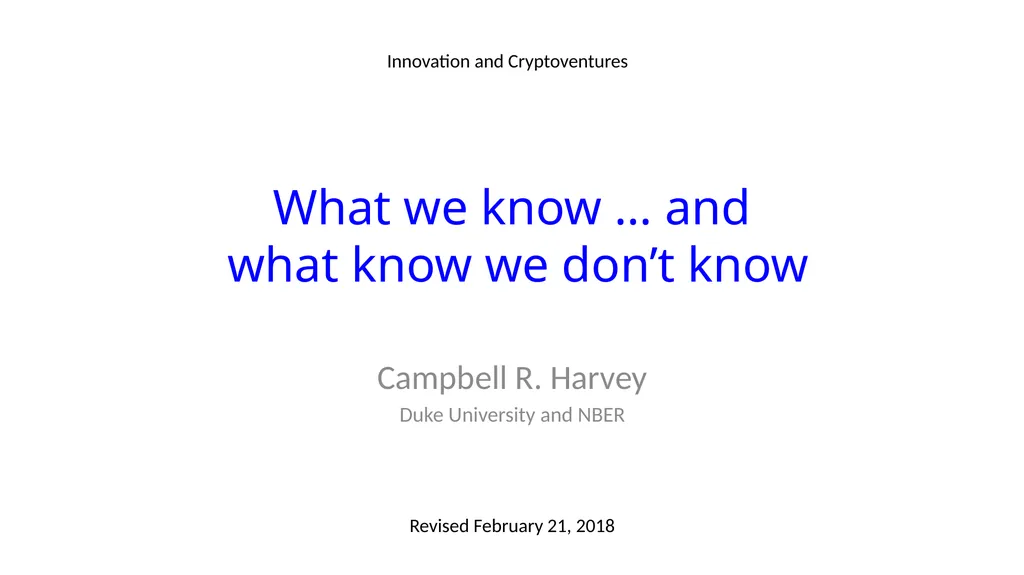
What we know … and what know we don’t know
Author: jane-oiler | Published: 2025-06-27
Description: What we know and what know we dont know Campbell R. Harvey Duke University and NBER Revised February 21, 2018 Innovation and Cryptoventures Campbell R. Harvey 2018 2 Blockchain No one type of blockchain. It is a general classification.
Download Presentation
Download the PPT/PDF: Download
Transcript:
Loading transcript�